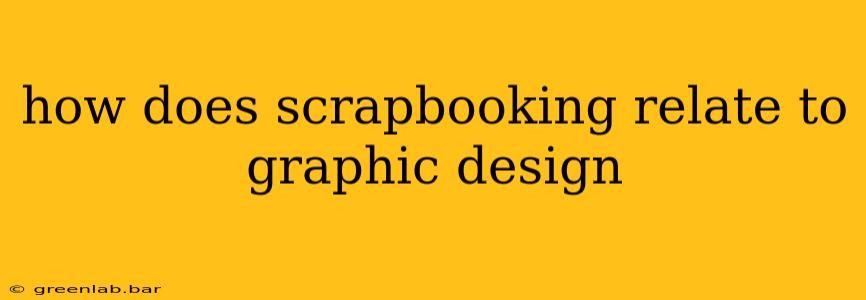Scrapbooking and graphic design, while seemingly disparate, share a surprising number of intertwined principles and practices. Understanding these connections can unlock creative potential for both scrapbookers and graphic designers alike. This article delves into the key similarities and how they inform each other.
Shared Design Principles: The Foundation of Both
At its core, scrapbooking is a form of visual storytelling, demanding a keen eye for aesthetics and a thoughtful approach to layout and composition. These are also fundamental pillars of graphic design. Both disciplines rely on:
-
Typography: Choosing the right fonts, sizes, and styles to convey mood and message is crucial in both. A poorly chosen font in a scrapbook can detract from the overall aesthetic, just as it would in a professional logo design. Consider the impact of script fonts for a romantic feel versus bold sans-serif fonts for a modern vibe.
-
Color Theory: The effective use of color palettes is vital for creating visually appealing and harmonious designs. Scrapbookers select paper, embellishments, and ink colors to complement each other, mirroring how graphic designers choose color schemes for websites, marketing materials, or branding. Understanding color harmony (analogous, complementary, etc.) enhances both pursuits.
-
Layout and Composition: The arrangement of elements within a given space is paramount. Whether it's a scrapbook page or a website banner, the rule of thirds, visual hierarchy, and white space all play a key role in guiding the viewer's eye and creating a balanced, engaging composition. A cluttered scrapbook page, just like a poorly designed website, will be difficult to navigate and appreciate.
-
Image Selection and Manipulation: Both scrapbookers and graphic designers frequently work with images. Scrapbookers select photos, often digitally enhancing them for better quality or to fit a specific style. Graphic designers do similar work, utilizing image editing software to create visuals that fit a brief. Understanding image resolution, aspect ratios, and basic image editing techniques is beneficial for both.
Practical Applications and Cross-Over Skills
The skills honed in scrapbooking can translate directly into graphic design, and vice-versa. Here are some examples:
-
Software Proficiency: Many scrapbookers utilize digital scrapbooking software, gaining familiarity with design tools and techniques. This experience can provide a solid foundation for transitioning to more professional design programs like Adobe Photoshop or Illustrator.
-
Visual Storytelling: Scrapbooking cultivates the skill of narrating stories through visual elements. This ability to weave a narrative using images and text is highly valued in graphic design, particularly in fields like advertising and web design.
-
Attention to Detail: Both pursuits demand a meticulous eye for detail. Scrapbookers carefully select and arrange elements, while graphic designers ensure consistency and accuracy in their designs. This shared attention to detail translates to higher quality work in both domains.
-
Creativity and Experimentation: Both scrapbooking and graphic design encourage creativity and experimentation. Trying new techniques, experimenting with different styles, and pushing creative boundaries are central to both practices.
Conclusion: A Synergistic Relationship
Scrapbooking and graphic design are not mutually exclusive; they are complementary disciplines that share a deep foundation in visual communication and design principles. The skills and knowledge gained in one can significantly benefit the other, fostering a synergistic relationship that enriches the creative process for both the seasoned scrapbooker and the aspiring graphic designer. Embracing the common ground between these seemingly different art forms opens up a world of opportunities for creative exploration and professional development.

